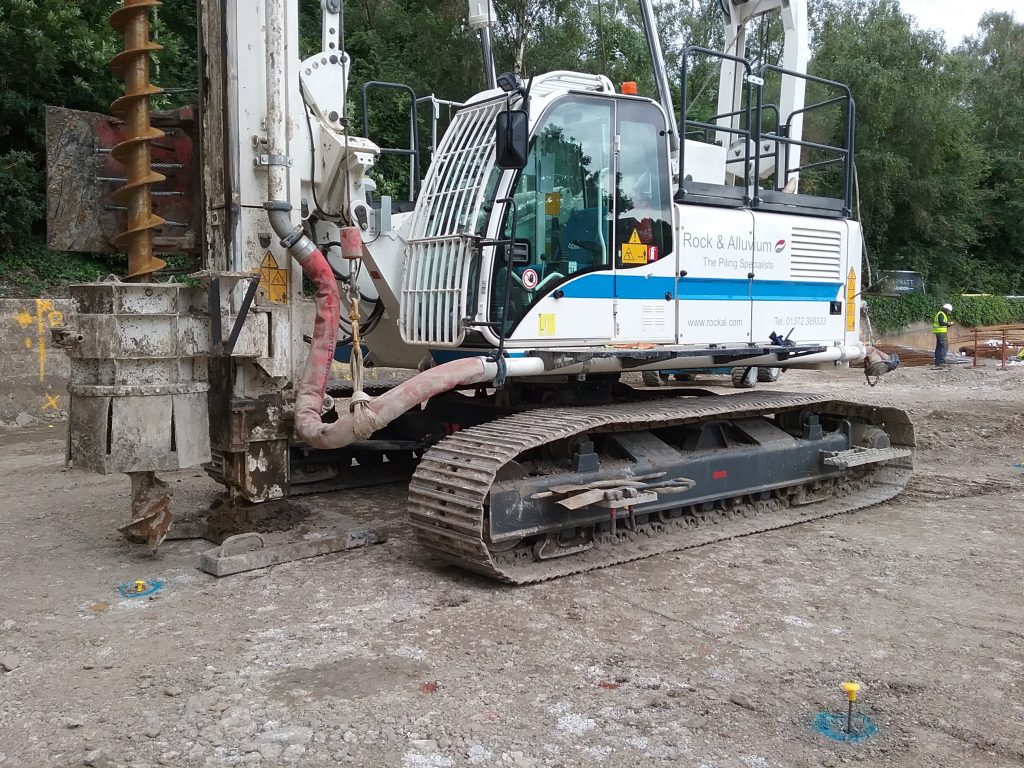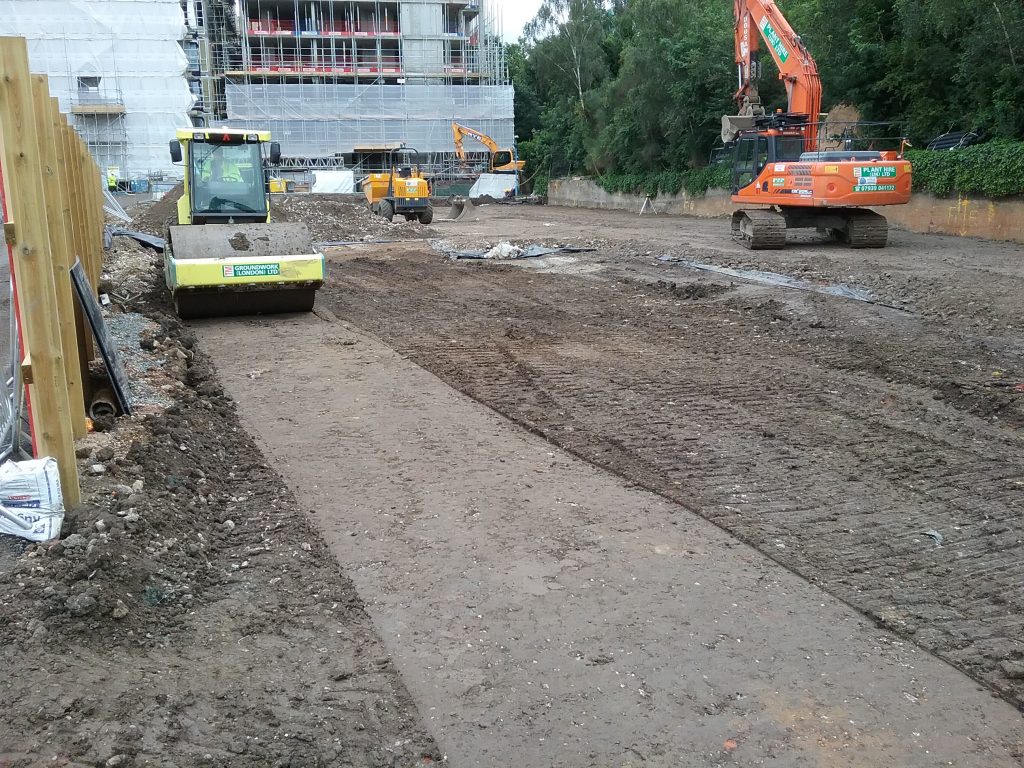A piling mat is a temporary working platform designed to provide a reliable and stable surface on which piling rigs and other ground treatment machinery can operate.
The piling mat should be designed and constructed in accordance with the requirements of BRE Report BR470 ‘Working platforms for tracked plant: good practice to the design, installation, maintenance and repair of ground-supported working platforms’.
The design of the piling mat will depend on the ground conditions and loadings. The sub-grade is generally characterised by undrained shear strength for cohesive soils or angle of shearing resistance for granular soils.
Piling mats are typically constructed using well-graded stone, clean-crushed concrete, or crushed hard rock. In some circumstances recycled demolition material can be used if the metal and timber debris are removed.
Piling mats will need to be compacted in layers and should be free-draining to prevent any build-up of water or slurry on the surface. On sites with a high water table, a membrane should be used to prevent the migration of fine-grained soils.
All piling mats must be visually inspected by a competent individual once they have been constructed to formation level. This inspection must be recorded and photographic evidence retained to confirm the integrity of the formation level.
All piling mats must be provided with a Federation of Piling Specialists Standard Working Platform Certificate (WPC) prior to use. The certificate must be signed by the principal contractor and issued to the piling contractor before any piling commences.
Piling mats should be inspected daily to ensure they are in proper working condition. The piling contractor must keep a record that identifies any maintenance of the piling mat, and any issues with the piling operations or other unforeseen circumstances.



